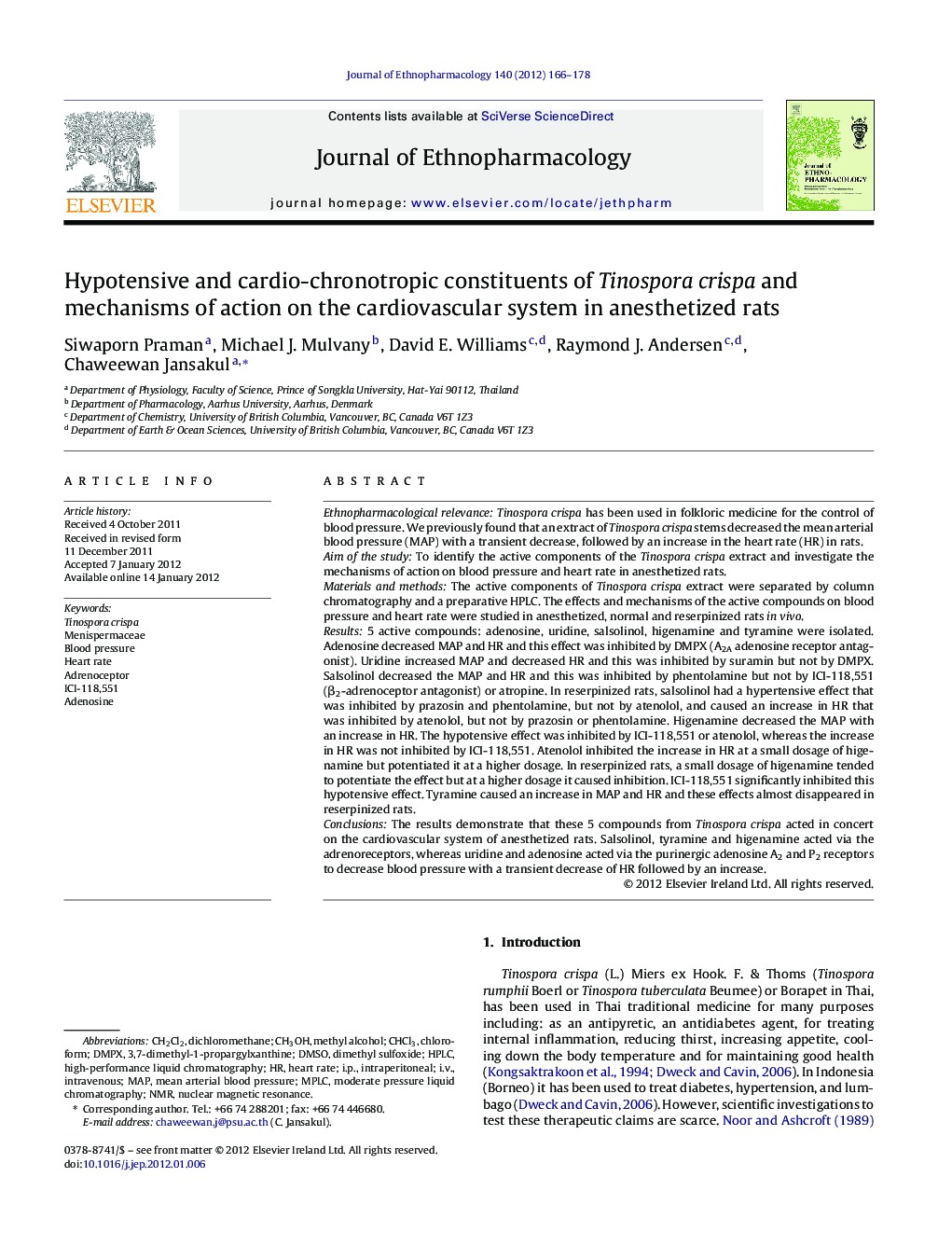| کد مقاله | کد نشریه | سال انتشار | مقاله انگلیسی | نسخه تمام متن |
|---|---|---|---|---|
| 5839289 | 1123991 | 2012 | 13 صفحه PDF | دانلود رایگان |

Ethnopharmacological relevanceTinospora crispa has been used in folkloric medicine for the control of blood pressure. We previously found that an extract of Tinospora crispa stems decreased the mean arterial blood pressure (MAP) with a transient decrease, followed by an increase in the heart rate (HR) in rats.Aim of the studyTo identify the active components of the Tinospora crispa extract and investigate the mechanisms of action on blood pressure and heart rate in anesthetized rats.Materials and methodsThe active components of Tinospora crispa extract were separated by column chromatography and a preparative HPLC. The effects and mechanisms of the active compounds on blood pressure and heart rate were studied in anesthetized, normal and reserpinized rats in vivo.Results5 active compounds: adenosine, uridine, salsolinol, higenamine and tyramine were isolated. Adenosine decreased MAP and HR and this effect was inhibited by DMPX (A2A adenosine receptor antagonist). Uridine increased MAP and decreased HR and this was inhibited by suramin but not by DMPX. Salsolinol decreased the MAP and HR and this was inhibited by phentolamine but not by ICI-118,551 (β2-adrenoceptor antagonist) or atropine. In reserpinized rats, salsolinol had a hypertensive effect that was inhibited by prazosin and phentolamine, but not by atenolol, and caused an increase in HR that was inhibited by atenolol, but not by prazosin or phentolamine. Higenamine decreased the MAP with an increase in HR. The hypotensive effect was inhibited by ICI-118,551 or atenolol, whereas the increase in HR was not inhibited by ICI-118,551. Atenolol inhibited the increase in HR at a small dosage of higenamine but potentiated it at a higher dosage. In reserpinized rats, a small dosage of higenamine tended to potentiate the effect but at a higher dosage it caused inhibition. ICI-118,551 significantly inhibited this hypotensive effect. Tyramine caused an increase in MAP and HR and these effects almost disappeared in reserpinized rats.ConclusionsThe results demonstrate that these 5 compounds from Tinospora crispa acted in concert on the cardiovascular system of anesthetized rats. Salsolinol, tyramine and higenamine acted via the adrenoreceptors, whereas uridine and adenosine acted via the purinergic adenosine A2 and P2 receptors to decrease blood pressure with a transient decrease of HR followed by an increase.
206
Journal: Journal of Ethnopharmacology - Volume 140, Issue 1, 6 March 2012, Pages 166-178